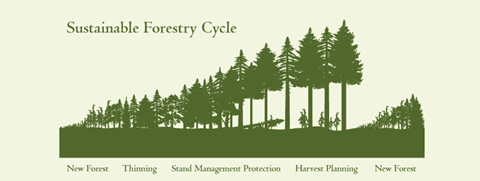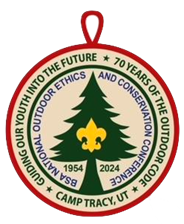
Conservation & Environment
This will be a continuing series of articles on various aspects of the properties we own, lease, care for, and look to make better. As we all know, the program of Scouting is valuable to the growth of youth in this country and around the world. Where we deliver that program needs to convey that value and the coming articles are intended to assist us all in making that conveyance to our current users, as well as all of our future users and their families.
For most of us we use on a daily basis an item we take for granted being available for us to purchase 24/7 all year long. Until we couldn’t. What? Think back to the early days of Covid-19. What disappeared off grocery shelves faster than anyone thought possible? And many of us thought, why are people buying this one product over anything else?! I mean really!!! Toilet paper. Who would’ve thunkit?
We all expect toilet paper to be ever present in our stores, until it isn’t, and wasn’t! And why did this occur? It’s not like we lost the source. Where does toilet paper originate? If you’re a Charmin user you may think a little cabin in the woods with a bear population that happily makes toilet paper for us to use, but… that’s crazy thinking! Or is it?
So, this month’s article is not about toilet paper, I’m sure you’re happy to know. Its not about the bears either. It is about the ‘woods’ this material comes from.
We are blessed with some of the most awesome ‘dirt’ on this satellite we ride on! And on that ‘dirt’ for most of us, we have an abundance of trees. Of all shapes, sizes, and species. And, quite frankly, some of us manage our forests better than others. We should all have forestry plans in our quiver of tools to use in managing the properties we own of course, but also for those we lease, which many of us would find surprising in the high percentage of properties we operate our program upon, that we do.
In particular a component of that forestry plan needs to address how we harvest the God given resource available to us. Depending on your acreage of trees, what quantity could be harvested regularly? To some degree, this is a market driven resource, but given the growth of many parts of the country, the need to harvest some of our forests is always present. In addition to how you manage the harvesting, notably contract inclusions addressing access roads installed to remove those trees harvested from an area, what materials are used and how are they maintained over time, what happens to the slash created from the harvesting process, and how is the acreage harvested replanted for a future crop. All of these questions, and more, need to be addressed with a logger prior to any harvest being initiated.
What we’ll address this month is the last part of those inclusions just mentioned, replanting. In review of several forestry plans for those that have one, this issue is rarely addressed, but should be so future harvests, and their revenue, are managed in perpetuity. Additionally, as forests are sometimes referred to as the “lungs of the world” we all should manage the health of our “lungs” more directly as they take care of our atmosphere, or more directly, the air we all breath. Given that climate change is very real and is happening right before our very eyes, this is a serious subject becoming all the more so with each passing day. We cannot afford to look the other way any longer!
What would you say if the question was posed to you concerning the rate of what we’re losing in forested areas every year? Are you aware of the loss? From the Arbor Day Foundation the amount of deforestation of the worlds rain forests alone is “roughly 81,000 square miles each year.” Of those who’ve been to our crown jewel, Philmont, we know the ranch is comprised of roughly 300 square miles. The amount of rain forest alone each year we’re losing is equivalent to about 270 Philmont’s!
Think about that for a minute. Notably, think about the fire this organization experienced at Philmont a couple years back. That was what? Figure heard most was about 33,000 acres were burned. That equates to about 52 square miles. To put this in another perspective, the amount of rain forest alone we lose every year is equal to 1558 Philmont burns every year! Think about that! And that doesn’t include the fires in California, in Canada, Indonesia, Russia, Europe, or Africa! We are losing this precious resource at an extremely alarming rate!
So, what can we do about it?
First, let’s all start by generating a forestry plan for the properties you manage if you haven’t already. And if you need guidance on what to include don’t be shy about reaching out and asking for the help! Working with a local forester and/or a representative of the US Forest Service would be a good first step. Consulting with loggers who are more conscious about what their operation does to a tract of land than those who are blind to the damage these companies can cause is a good second step.
Second, as part of the replanting component, where can you go to acquire seedlings? Where can you acquire very young trees, in a cross-section of species that will grow in your area and soil types? In a quantity that will translate to a good survival percentage of the area replanted. As a tree doesn’t become the 40’ to 80’ beauty they will grow to overnight, what is the expected survival rate and what thinning measures if any, need to take place while the forest matures? This is where having your local forester as a member of the team that helps you manage your property is invaluable. Your Ranger for your property needs to be versed in more than just how to take down a diseased tree safely, but also how they can contribute to the success of a harvested area being replanted and grow into a future area to be harvested.
Sources for tree seedlings include your county extension service. Many of the states, especially those that are heavily forested, have state and county departments that offer varying species of trees. Many offer fast growing species to the agricultural community to help protect fields and act as wind breaks to minimize wind erosion. Others offer the species most commonly harvested for the lumber and pulp industries. Other sources include the lumber industry and mills as they rely on a continuous supply of product to generate what they sell to other industries. Arbor Day Foundation can supply varying species of trees. Nice thing to know is they are capable of supplying large quantities of seedlings to cover acres. Some cities, especially those designated as Tree Cities, have tree farms which may offer seedlings in trade for time helping on the tree farm itself. Toilet paper was mentioned back in the beginning of this edition of Let’s Do It! with some of those manufacturers implementing their own tree planting initiatives so they have a steady supply of pulp from which to generate their product lines. Quilted Northern is a brand that replaces 2 trees for every tree they harvest. In fact, since 2020 they’ve already funded the planting more than 3.5 million trees. Now we’re not on that scale, but at this point every little bit helps.
Looking on the internet other sources for seedlings are – Walmart, Etsy, Gurney’s, many nursery’s are good sources for obtaining quantities of tree seedlings. Bestseeds, Willis Orchards, Stark Brothers, and certainly Amazon are among many who offer seedlings. So, it’s not like you can’t obtain these locally and by wholesalers throughout the country. The only caution is to obtain seedlings of species more native to your area and soils.
Another option may be 8billion trees. This is a company that was formed to offset the deforestation taking place in the Amazon rain forest in particular. While they don’t distribute seedlings, by purchasing their products, making donations, and membership you are contributing to the carbon offset initiative which is vital to the health of our planet.
Trees. Large and small, big and tall, colorful and fruitful, trees are a common sight on our properties. And while they can be majestic and provide us numerous resource they can also present us with all sorts of issues we need to be much more aware of. But, let’s get to where we manage better what we have already first. Then we can dive deeper into all approaches to managing the trees on your properties.
Generate the plan and put the plan in motion so future generations of Scouts and their families, and quite frankly, their communities can enjoy the woods as much as we do!
See you next issue!
Dave Cornell
Architect
The Outdoor Programs / Properties Team is ready to assist and guide in any respect to making the program of Scouting the best youth program! Reach out to any member of the team and we’ll endeavor to provide quality answers to any issue you may have and/or facing. We look forward to working together to make the program the best ever!







